$39.00 / month and a $19.00 sign-up fee
Each month of your subscription comes with a unit class code which is grade and course-specific. This code opens a world of resources to you and your family. We have built pre-designed courses that you can follow as is or explore our extensive library of resources to add to your child's learning experience.
We also include training courses so you can better deliver a Classical Education experience in your home setting.
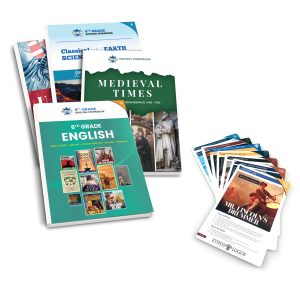
Behind the Unit Cards and workbooks is a full digital support platform that will guide your family through each subject, each grade on a day-by-day basis. We built out this platform using a learning management system (LMS) specifically used in American schools.
Using the LMS, we provide you with a course code. Once you enter the course code into your digital log in, you can access a library full of resources that help you to teach a particular unit. Each month, you will receive the months’ worth of course codes for:
History
English
Math (Saxon)
Science
Artists
Musicians
Values and Virtues
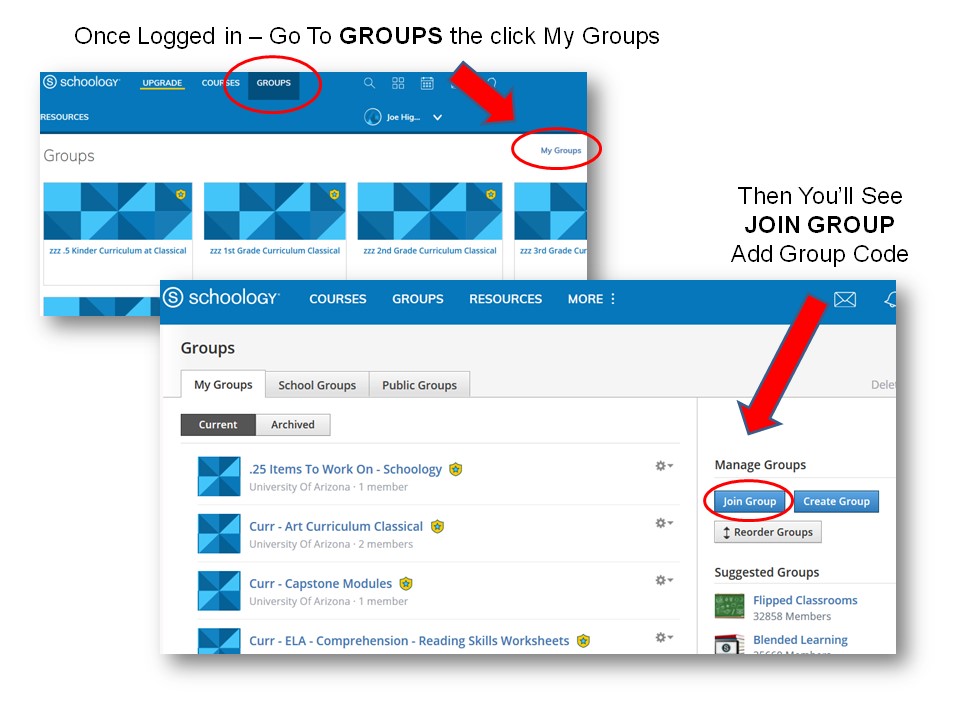
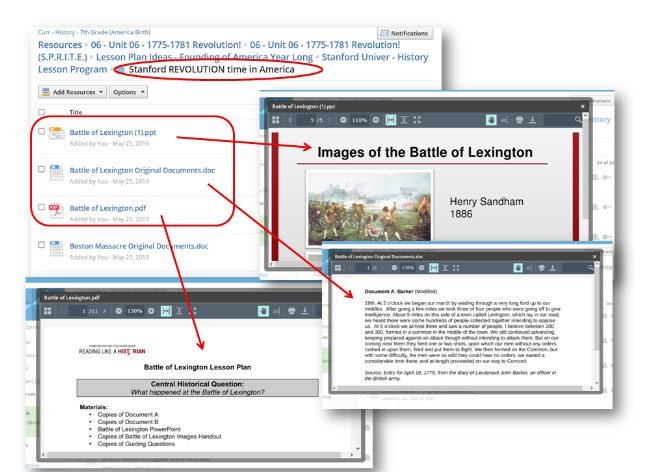
Once you have the class code, you enter the code into your library and then you can pull over all the resources we’ve put together to teach a particular month-long unit. These resources have been built over years of classroom experiences. We provide you with a series of folders, lessons, prompts, quizzes and powerpoints or videos to first introduce a topic or subject to your scholar, then create assignments that allow them to research and dig deeper into subjects.
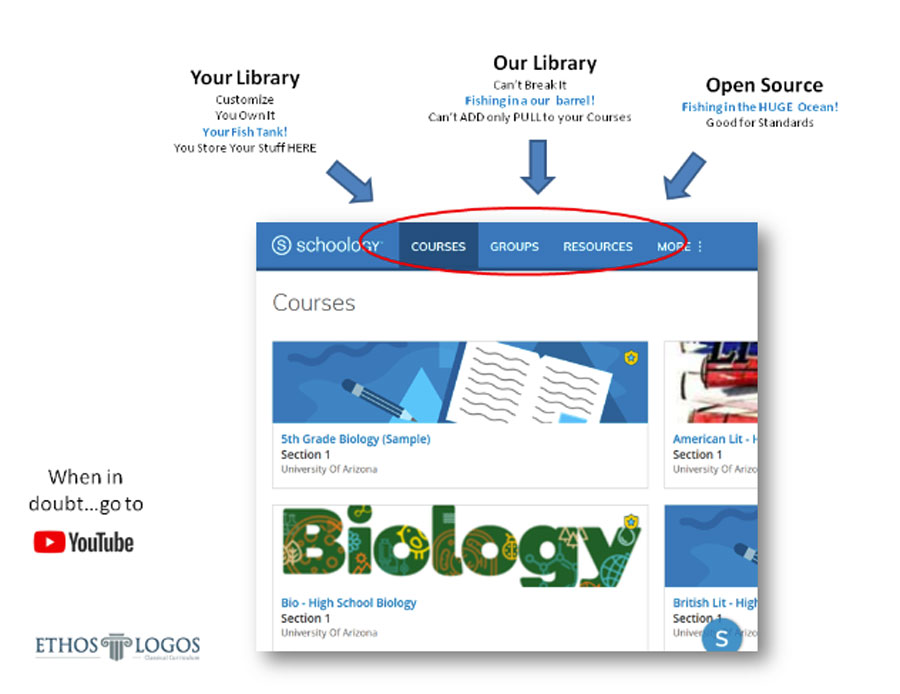
Once you enter your class code for each of your subjects (English, science, history etc.), you will see a week by week lay out of the instruction we have put together for your child. Your child simply opens the first week folder, then the discussions, lectures, documentaries, short videos, articles, reading assignment detail the key content to learn and understand forthe week. There are assignments and projects for your child to work through. Many of these units include quizzes, essay or unit tests to check for understanding.
If you would like to tailor our pre-built lessons towards your child’s interests, we include additional folders full of very specific resources that take out much of the guess work you may have in customizing your child’s learning.
Think of our digital offerings like ordering a dish off the menu, as is, versus going to the buffet and picking out as much as you want, exactly the way you want it! Combine our pre-built with the resource buffet for the best of both worlds. In our schools, we provide these resources for our teachers to ease their efforts in finding tools to teach a particular subject. We let them know that all the curriculum we’ve built is not a script for them to follow, rather we look to take the work of finding resources off their plate. We tell them, we’ll provide you with the WHAT to teach, you focus on the HOW and WHY aspects of being a great teacher.
In addition to our prebuilt, day by day lesson delivery, we also include folders full of resources that can expand or compliment the delivery that we have built. For example, we may build out a unit on the American Revolutionary War and in the build out, we provide a daily set of learning goals, assignment, and assessments. You may decide that your scholar enjoys the portions of history that reflects the daily life during the time period, the religious affiliations and the geographic time and place of each history unit. You can easily explore our resources and add or exchange our prebuilt content for content you found in our system.

The power of our digital content to delivery EXACTLY what you are looking for at the EXACT moment is what makes the Medici Classical so impactful. You can use our printed resources or expand your options by adding the Medici Digital subscription.
Included in our digital subscription are dozens of other courses that explain the theory of Classical Education, or you can view and learn practical tips and tricks on teaching the Classical way.
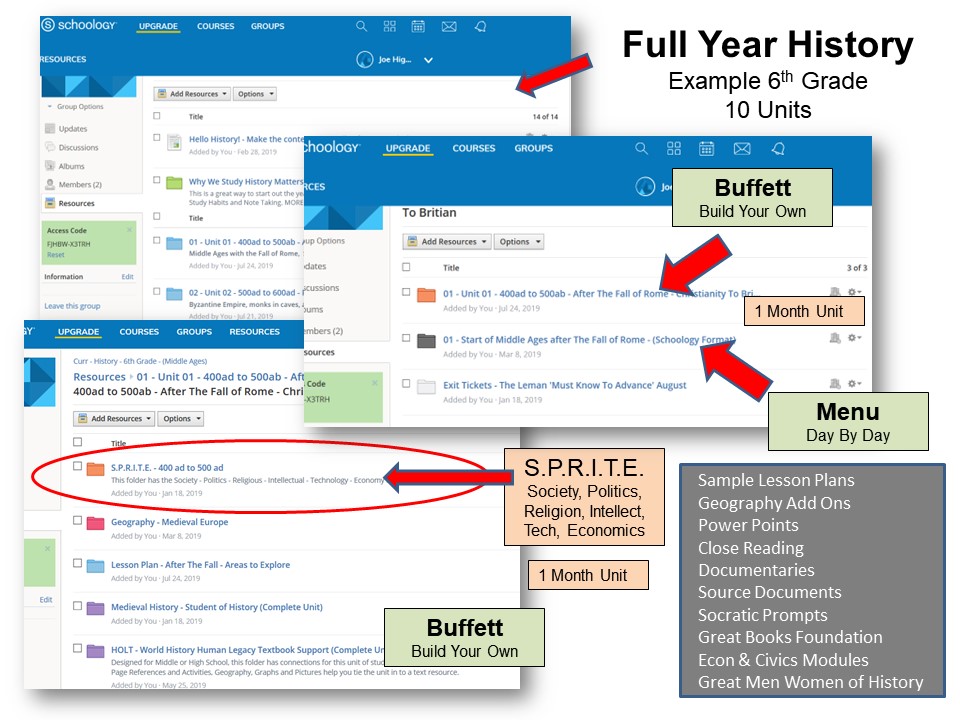
History is a big deal in a Classical school. Everything cascades of the history unit. For this reason, the History Curriculum Cards are jam packed with ideas, concepts and large terms. When you subscribe to our digital content, each month of history has hunderds if not thousands of combinations that you can put together to make a particular time period come alive.
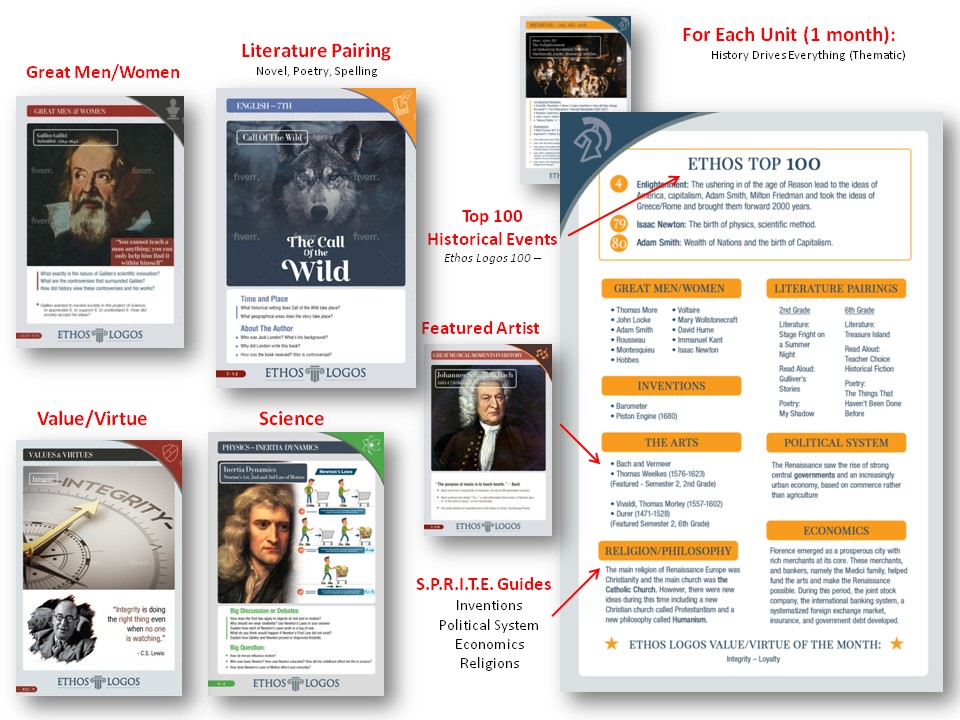
Just like all our digital resources, you can move from our digital library the day by day instruction that your scholar can follow and enjoy our you can explore our clearly laid out folder of resources and target particular aspects of a historic unit. Our S.P.R.I.T.E. folders are a great palce to start exploring what else you may be able to add to your childs history lessons.

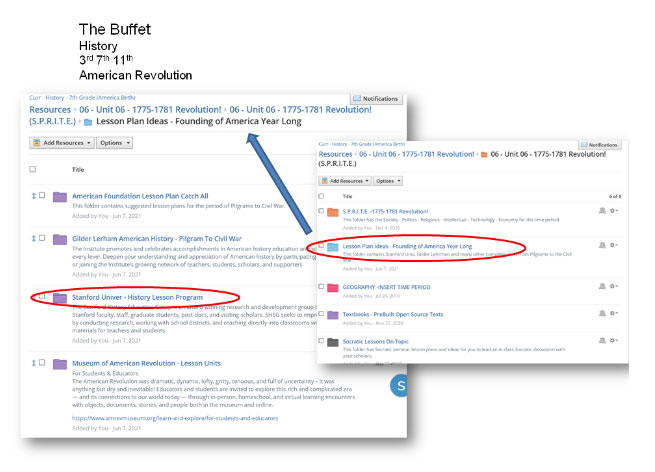
English instruction is multifaceted and involves an intricate dance of understanding and interpreting great works of literature. With very early readers, the process involves reading to your child, pausing, and asking questions to make sure they are comprehending what is being read. For a high schooler, the process may include literary analysis and reviewing authors intention, historical context, themes, settings, and character evolution over the course of the novel. What we have done is build out English courses that help move your child from emergent reader to confident writer and able to handle college level English.
Once you have our English novel card, you see the big areas to cover during a particular month-long novel study. Our accompanying workbooks, include chapter by chapter questions that you can use to check understanding and ensure your scholar is reading and comprehending the story. The card includes prompts for Theme, Authors Intent, Vocabulary (novel words, Latin root words, Scripps Spelling) and Time and Place context for the novel.
Our workbook includes a detailed list of yearlong learning targets that your student should be working on during the yearlong English course. This is all you need to teach a novel.

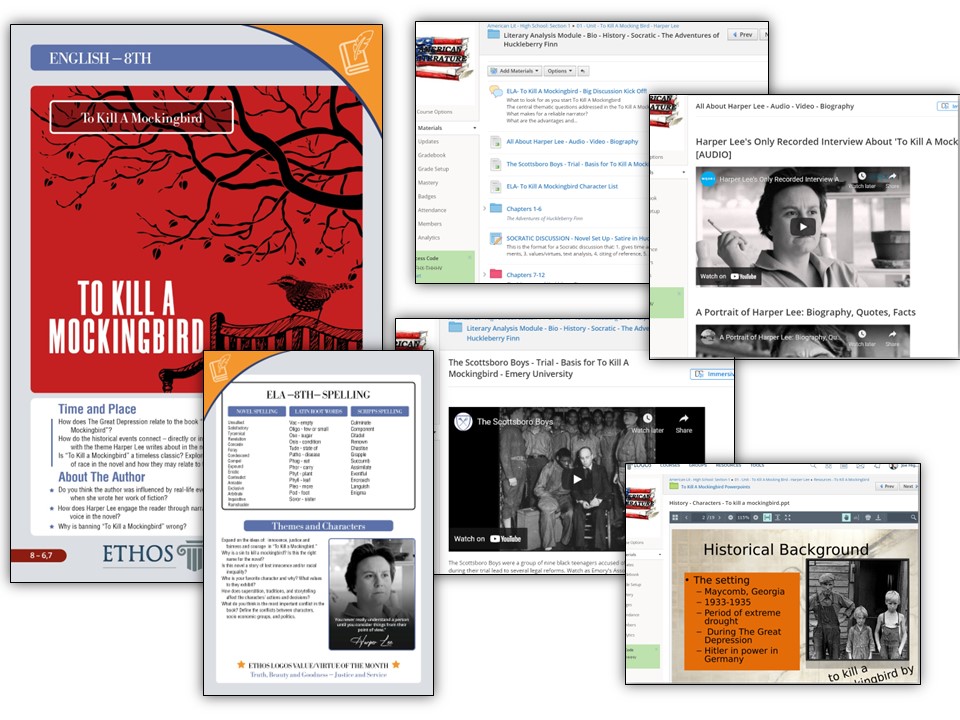
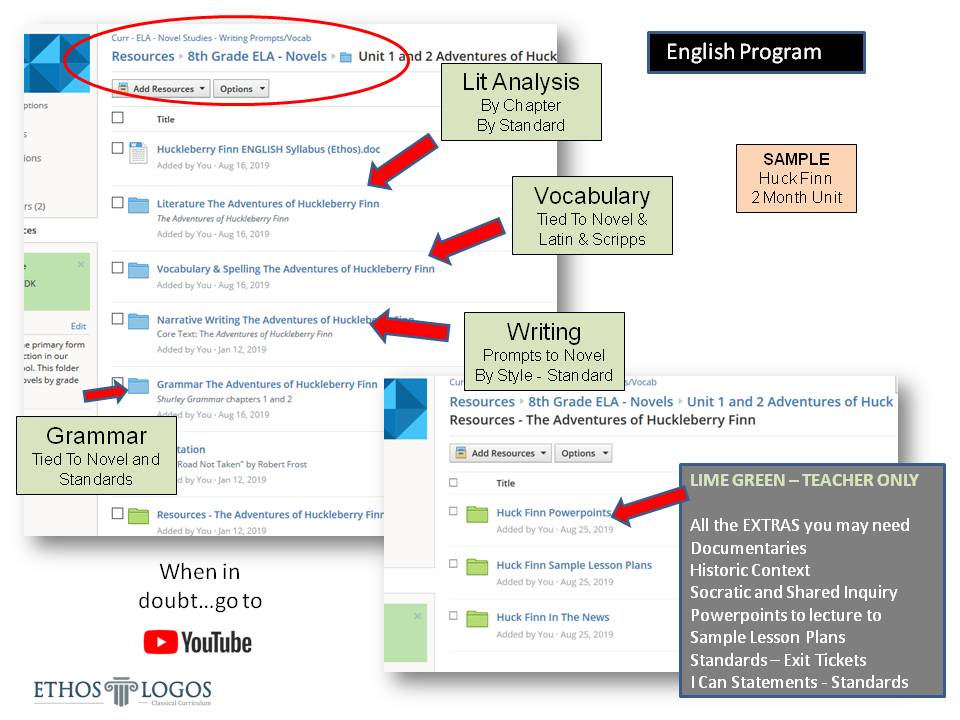

Saxon math, developed by John Saxon, is a teaching method for incremental learning of mathematics. It involves teaching a new mathematical concept every day and constantly reviewing old concepts. While other math curricula ask students to progress from simple to complex concepts in just a few weeks, Saxon Math scaffolds instruction of each concept and continues to review information introduced earlier. This allows students the time and practice to retain math concepts to the level of mastery.
Today, Saxon Math is getting more difficult to find. There are many options to purchase the textbooks, but the publisher is slowly trying to phase out a good thing. The Saxon math textbook has gone through two reiterations, the original Saxon books which many home schools’ families are finding used or the updated 2004 version which bifurcated geometry and trigonometry among other edits. You will find Saxon Math as the go to math instruction textbook for, homeschoolers, high performing charter schools and private schools around the US.

Saxon Math is a core curriculum for students in kindergarten through 12th grade. At the intermediate and middle-grade levels, daily lessons introduce new concepts and skills, incorporating real-world problem solving and applications of mathematics. Saxon Math is aligned with the Common Core State Standards. This alignment has some gaps that the Medici Classical field testing has identified and addressed.
High School Advanced Mathematics includes the equivalent of the second half of geometry, plus advanced algebra, pre-calculus, and trigonometry.
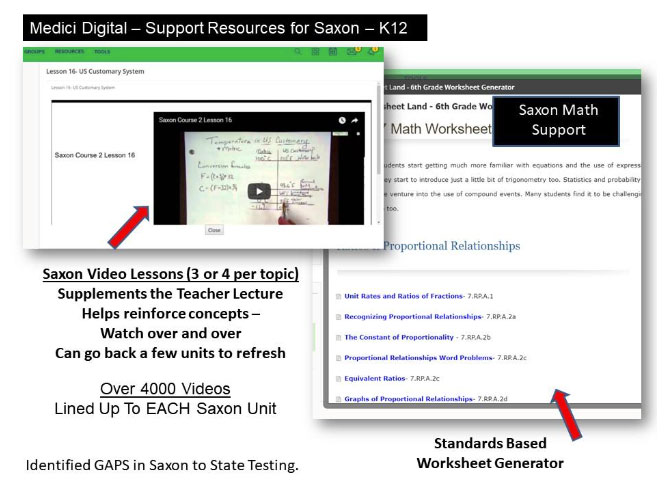
The mathematics program of instruction will have at the foundation, the Saxon Math program. Saxon Math has a purposeful spiraling aspect that refreshes on basic concepts for the first 24-33% of the lessons then slowly introduces basic core concepts for the particular course and builds upon those concepts to mastery. Research also suggests there is value in a teaching method that uses small, easily digestible chunks of information within its. Studies by Rosenshine and Stevens (1986) and Brophy and Everston (1976) demonstrated the importance of using incremental steps when teaching new information. Effective concept development involves incremental skill instruction distributed throughout a school year.
In selecting the Saxon Math program for the Medici Classical math program, we looked for a program explicitly aligned to the Classical model's philosophical approach, specifically:
Inside our digital platform, we include professional development and training resources for you or your child to better the depth and impact of the Saxon math program.
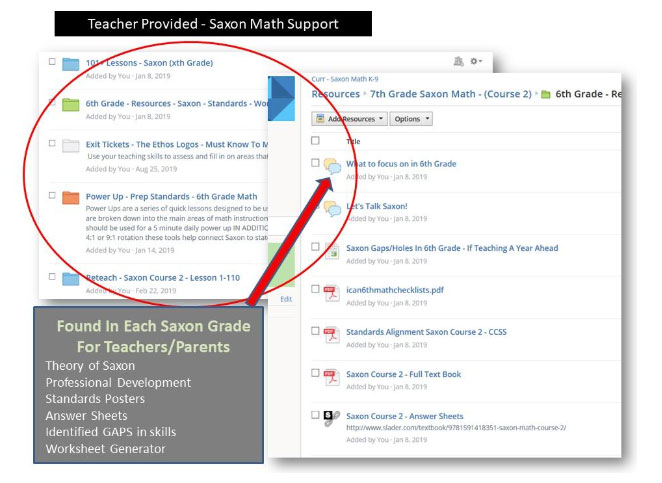
During the grammar stage, scholars rehearse and memorize facts related to a particular domain or skill that guide them in problem solving.
During the logic stage, scholars can detect errors and misunderstandings through continual practice and feedback. By the time scholars have reached the upper logic and early rhetoric stage, they have practiced a skill to the extent that it becomes automated, which reduces the amount of working memory needed to perform the skill and leading to expertise with that skill.
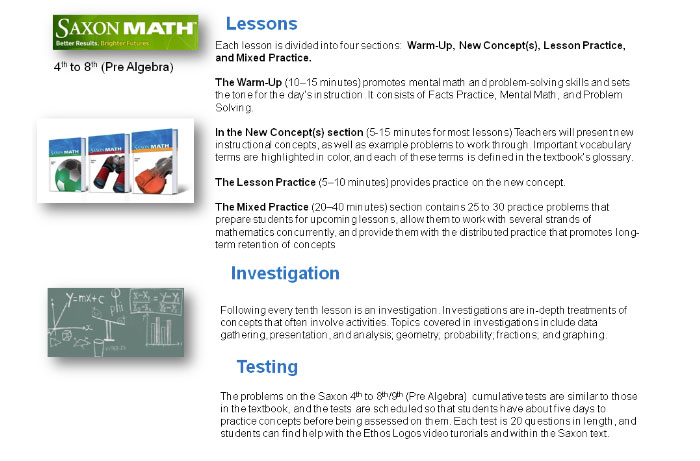
Through daily reinforcement, practice, and application of basic skills and concepts, students build conceptual understanding, computational fluency, and problem-solving skills and strategies. This foundation supports a steady progression through higher levels of mathematics.
In younger grades, Saxon includes engaging manipulatives and hands-on learning tools to help students develop and demonstrate understanding. The morning math time Saxon wall is interactive and helps anchor math skills needed for higher-level computation.
Students build skills and confidence through daily opportunities to review, develop mathematical reasoning, and apply knowledge.
The instructional effectiveness of Saxon Math is clear. Decades of research show classrooms using Saxon consistently see a dramatic improvement in student achievement.
Easy-to-follow daily lessons offer a consistent structure to deepen mastery.
Classroom Discourse
Daily discussion and practice help students build an understanding of basic skills, mathematical concepts, and problem-solving strategies.
Hands-On Learning
New concepts expand students’ knowledge through hands-on activities using manipulatives and other materials.
Writing
Students gain depth of knowledge through writing practice, which gives them the opportunity to review and apply concepts.
Summative and Formative Assessments
Summative assessments, including Power Up, Cumulative, Benchmark, and End-of-Year tests, allow teachers to continuously monitor progress.
Formative assessments conducted through daily instruction, lesson practice, and written practice provide immediate feedback for intervention and enrichment.
Perhaps the greatest impact we have seen with Saxon Math is twofold:
Spiraling: Saxon is built upon spiraled instruction which has the premise that repetition is assumed to be the mother of instruction. In the Saxon sequence, students learn a new concept and that concept is surrounded by refresher concepts that continue to build on prior knowledge. The new concept is then brought back in again and again until the student has a deeper mastery of the concept. Gone are the days where a math concept that is learned in August is not seen again until the finals in December. The constant repeating of concepts coupled with new, bit sized skills, keeps everything fresh and anchored.
Because smaller pieces of information are easier to teach and easier to learn, the Saxon Math series was developed by breaking down complex concepts into related increments. Frequent assessments of new and old concepts are encountered throughout the lessons, ensuring that students truly integrate and retain critical math skills.
Teacher Friendly: To successfully teach Saxon, it takes a teacher about two hours to understand how to effectively teach Saxon Math. In our brick-and-mortar charter schools, we are adding 125+ teachers per year and the ability for a seasoned or new classroom teacher to successfully step into a math system and teach with minimal professional development is invaluable. As a homeschool parent, who may be concerned with teaching math, realize that the Saxon program is straight forward and easy to implement. Just follow the lessons, have your child complete the evening homework, help them where they are struggling, take your unit assessments every 10 lessons and repeat.
Within the Medici Digital platform, we include deeper dives into each artist with interactive presentations, powerpoints, digital museum tours, documentaries, and lesson plans on how to make a particular artist come alive. Our art teachers are beyond creative, and we’ve included some of their ideas on how to teach art to various grades of scholars.
Within the Medici Digital platform, you will find lesson ideas and tools to cover all the major artists outlined in our program. Just like all our digital resources, we provide you with a library of digital resources that you can then move into your teacher account and deliver exactly the way you wish to yoru scholar.
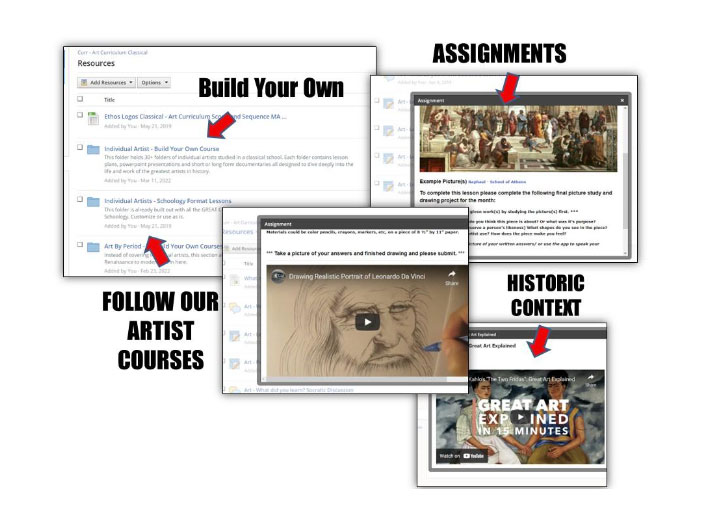

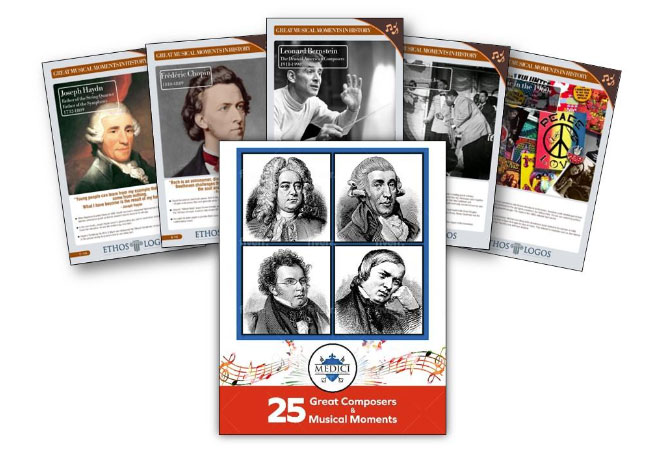
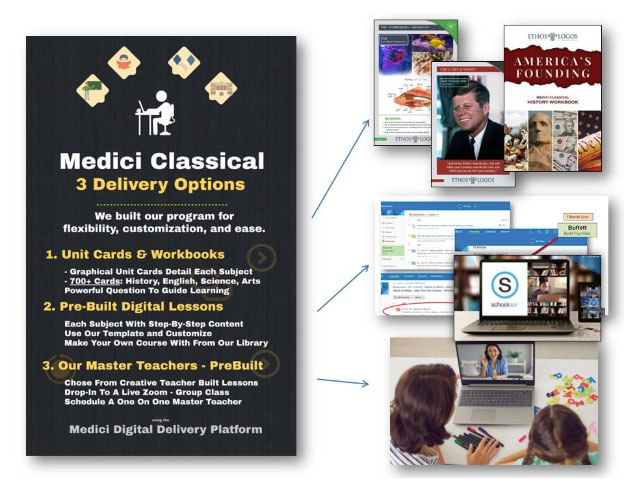
Coming soon and building every day, we are offering an interactive platform for some of the top teachers in America to come right into your living rooms with powerful lessons and instruction all aligned to our Lesson Cards.
For our standard digital subscribers, you’ll be able to shop among dozens and eventually hundreds of teachers who are subject experts in their particular fields. These teachers will build course by adding in their own unique classroom experience. Who better to know how to address your child than a teacher with years and years of classroom experience? Each of these teachers have autonomy to add their unique flare and artistic touch to their digital classes. Some include their own video lectures; most include assignment that they are tried and tested in the classroom with scholar your child’s same age. They know what impacts kids and how bring about deeper thinking.
We offer discussion rooms, the ability to run in assignment for a grade and group or individual video type meeting in real time.
The teachers are creating MICRO STORES that outline what you can add into your monthly instruction. Our only rule for our teachers is to make sure they follow our general Classical Education outline of novels, history time period and science subjects.
What better way to teach the unit on the US Civil War than from a 20-year 8th grade classroom teacher who knows what students like, and which aspects of a lesson make the biggest impact?
These MICRO STORE teacher offerings include an introduction and bio on the particular teacher, reviews from other homeschool families on their content and delivery and a clear price for each of their units. Tap into the creativity of top teachers in Classical schools around the US. They are waiting to impact your scholar.
These courses are being added to and improved all the time. We solicit feedback from our families and work to improve the digital offerings every day.
We currently offer for an additional fee the following course:
Latin 1, 2, 3 and 4
AP American History
More course being added daily!